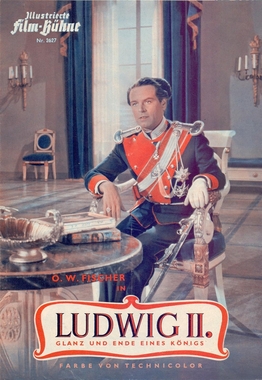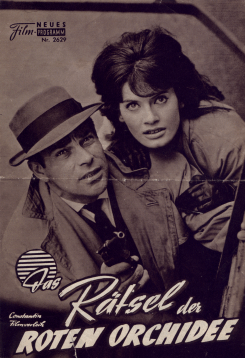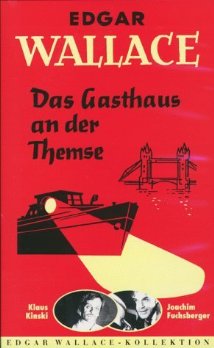
Nastassja Aglaia Kinski is a German actress and former model who has appeared in more than 60 films in Europe and the United States. Her worldwide breakthrough was with Stay as You Are (1978). She then came to global prominence with her Golden Globe Award-winning performance as the title character in the Roman Polanski-directed film Tess (1979). Other films in which she acted include the Francis Ford Coppola musical romance film One from the Heart (1982), erotic horror film Cat People (1982) from Paul Schrader, and the Wim Wenders drama films Paris, Texas (1984) and Faraway, So Close! (1993). She also appeared in the biographical drama film An American Rhapsody (2001). She is the daughter of German actor Klaus Kinski.

Klaus Kinski was a German actor. Equally renowned for his intense performance style and notorious for his volatile personality, he appeared in over 130 film roles in a career that spanned 40 years, from 1948 to 1988. He is best known for starring in five films directed by Werner Herzog from 1972 to 1987, who would later chronicle their tumultuous relationship in the documentary My Best Fiend.

Nosferatu the Vampyre is a 1979 gothic horror film written and directed by Werner Herzog. It is set primarily in 19th-century Wismar, Germany and Transylvania, and was conceived as a stylistic adaptation of Bram Stoker's 1897 novel Dracula, taking the title, setting and titular character's design from F. W. Murnau's 1922 film Nosferatu: A Symphony of Horror. The picture stars Klaus Kinski as Count Dracula, Isabelle Adjani as Lucy Harker, Bruno Ganz as Jonathan Harker, and French artist-writer Roland Topor as Renfield. There are two different versions of the film, one in which the actors speak English, and one in which they speak German.

Five for Hell is a 1969 Italian "macaroni combat" war film starring John Garko, Margaret Lee and Klaus Kinski. Italian cinema specialist Howard Hughes referred to it as a derivative of The Dirty Dozen (1967).

Venom is a 1981 British natural horror-thriller film directed by Piers Haggard and written by Robert Carrington. It stars Sterling Hayden, Klaus Kinski, Sarah Miles, Nicol Williamson, Cornelia Sharpe, Susan George, Lance Holcomb, and Oliver Reed. The film is based on Alan Scholefield's novel of the same name.

Target for Killing is a 1966 Austrian-German-Italian crime film directed by Manfred R. Köhler and starring Stewart Granger. It was shot between Maghreb, Yugoslavia and Rome.

Ludwig II is a 1955 West German historical drama film directed by Helmut Käutner and starring O.W. Fischer, Ruth Leuwerik and Marianne Koch. It is based on the life of the nineteenth century ruler Ludwig II of Bavaria. It was entered into the 1955 Cannes Film Festival. The film was shot in technicolor at the Bavaria Studios in Munich with sets designed by the art director Hein Heckroth and Fritz Lück. Location shooting took place at the historic residences of Ludwig II Herrenchiemsee, Neuschwanstein Castle and Hohenschwangau Castle.

Hanussen is a 1955 West German drama film directed by O. W. Fischer and Georg Marischka and starring Fischer, Liselotte Pulver and Siegfried Lowitz. It was shot at the Bavaria Studios in Munich. The film's sets were designed by the art directors Robert Herlth and Hermann Warm.

The Dead Eyes of London is a 1961 West German black and white crime film directed by Alfred Vohrer and starring Joachim Fuchsberger, Karin Baal and Dieter Borsche.

The Puzzle of the Red Orchid and also known as The Secret of the Red Orchid) is a 1962 West German black-and-white crime film directed by Helmut Ashley and starring Christopher Lee, Adrian Hoven, and Marisa Mell.

The Inn on the River is a 1962 West German crime film directed by Alfred Vohrer and starring Joachim Fuchsberger, Eddi Arent and Klaus Kinski. It is part of a series of films based on the novels of Edgar Wallace, produced in West Germany in the 1950s and 1960s.

The Black Cobra is a 1963 Austrian Crime film directed by Rudolf Zehetgruber and starring Adrian Hoven.

Last of the Renegades is a 1964 German-Italian Western film directed by Harald Reinl and starring Pierre Brice, Lex Barker, and Anthony Steel. It is based on a Karl May novel, and was part of a series of adaptations produced by Rialto Film. The film is a sequel to Apache Gold.

The Secret of the Chinese Carnation is a 1964 German-Italian krimi eurospy film directed by Rudolf Zehetgruber and starring Paul Dahlke, Olga Schoberová, Klaus Kinski and Dietmar Schönherr. It is based on a novel by Louis Weinert-Wilton, one of four film adaptations of his work released in the wake of the commercial success of Rialto Film's Edgar Wallace series.
Killer's Carnival is a 1966 crime film directed by Alberto Cardone and starring Stewart Granger.

His Name Was King is a 1971 Italian Western film directed by Giancarlo Romitelli and starring Richard Harrison and Klaus Kinski.

Jack the Ripper is a 1976 Swiss-German thriller film directed by Jesús Franco and starring Klaus Kinski as Jack the Ripper.
La femme enfant is a 1980 French drama film directed by Raphaële Billetdoux and starring Klaus Kinski. It competed in the Un Certain Regard section at the 1980 Cannes Film Festival.
Reifezeugnis is a 1977 German television film directed by Wolfgang Petersen and part of the Tatort television series. The film starred Nastassja Kinski in her first major role in a feature-length film, it was her breakthrough role that made her famous in Germany. It was also an important movie for Wolfgang Petersen's career as a director.

Room 13 is a 1964 thriller film directed by Harald Reinl and starring Joachim Fuchsberger, Karin Dor and Richard Häussler. It was made as a co-production between West Germany, France and Denmark, based on the 1924 novel Room 13 by Edgar Wallace. It was part of Rialto Film's long-running series of German Wallace adaptations.

















